6 Fields Where Robots Are Taking Charge
Over the next decade, the number and variety of robots in the workplace will soar, taking over many jobs that are too dirty, too dull or too dangerous for people to do.
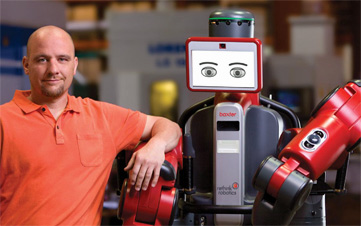
Over the next decade, the number and variety of robots in the workplace will soar, taking over many jobs that are too dirty, too dull or too dangerous for people to do. Already, about 1.4 million industrial robots are deployed around the world, as well as several million robotic devices designed for in-home consumer use. And potential growth is vast: Only about 10% of possible industrial users, for example, have actually incorporated robots into their processes.
In time, the use of robotics will likely spawn millions of new American jobs in designing, building, monitoring and maintaining electronic workers, in fields yet imagined.But short term, robots will displace thousands of workers, especially in fields that draw heavily on low-wage labor and/or put a premium on rote consistency, accuracy and endurance.
Here are six areas where you'll see more robots.
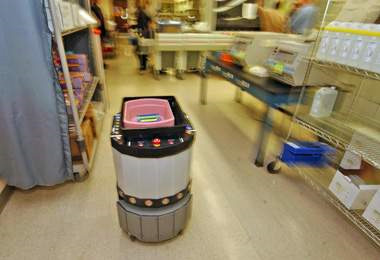
In Hospitals, Medical Centers and Nursing Homes
As one of the country's fastest growing industries, health care is attracting a lot of attention from robotics designers and makers. Doctor-controlled surgical robots are already on the job. Within the decade, microscopic bots — both biological and mechanical — will be used to clear clogged arteries, measure blood viscosity and deliver drugs to precise locations in the body. Mechanical aides will increasingly assist nurses and others who provide routine care, easing the need for nurse's aides, home health care aides and other positions that have been hard to fill. Among the tasks that robots will perform:
• Lifting and repositioning patients.
• Delivering medications to patients' rooms.
• Acting as mobile supply closets, following nurses from room to room.
• Delivering lab samples and reports.
• Conducting routine monitoring of patients — taking temperatures, blood pressure, glucose and so on.
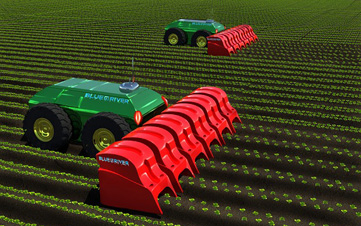
On the Farm
Growing quality vegetable and fruit crops is repetitive, back-breaking work -- and much of it is still done by hand. That's why engineers at Blue River Technology are developing a robot that can take over the job of thinning out lettuce seedlings, Their mobile unit, dubbed Lettuce Bot, will roll through rows of plants, comparing images of what it sees with a database of well-spaced, healthy plants. Ones that are too weak or planted too close to others will be killed with an overdose of fertilizer.
For conventional row farming, where machines such as harvesters and combines have long been in use, look for autonomous advancements as well. German tractor maker Fendt has developed a radio-and-GPS system that allows a driverless tractor to follow the lead of a manned one as they make their way around the fields, doubling the output.
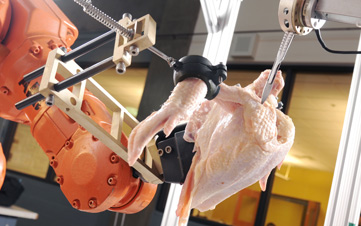
Food Preparation
As that lettuce makes it way to market, it might soon encounter another robot. Organic food provider Earthbound Farm Organic is using bots from Adept Technology to pack plastic clamshell containers full of greens. Earthbound has made a point of finding other positions for the displaced workers.
Food processing is rife with jobs that are open to robotic replacement. Scientists at the Georgia Tech Research Institute are developing a robotic system that can debone a chicken. With a 3-D vision system, the robot can adapt to different sizes of birds. It uses a feedback system to sense the junction of ligament and bone, thereby reducing the hazard of bone chips.
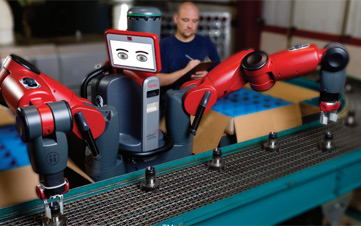
On Factory Floors
Long established in both U.S. and foreign automobile factories, robots are taking on complex tasks in manufacturing settings. Already, sophisticated carmaking robots can recognize which variation of a model is headed down the line, then select and assemble the right components for it. At Boeing, giant robots move rapidly and precisely over the metal skin of wide-body commercial airliners, riveting it in place.
The growing sophistication of sensors and artificial intelligence will make interaction between mechanical and live workers safe and feasible. Robots such as Baxter, from Rethink Robotics, can work side by side with humans, rather than in separate caged-off areas. Employees will continue to perform tasks that require human judgment, while mechanical helpers take on functions that require endurance or involve hazards such as heat, cold and exposure to chemicals. Robots will lift and move heavy objects.
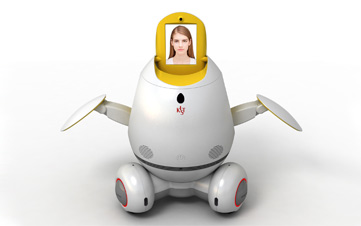
In Classrooms
Humanoid robots will go to the head of the class, taking telelearning to new frontiers. For example, English instruction is in high demand in Asian countries such as South Korea. Enter Engkey, a robot developed by South Korea's Center for Intelligent Robotics. Engkey teaches elementary school students pronunciation (and sings and dances). Human teachers in the classroom help facilitate Engkey's interactions. In the Philippines, Engkey's voice and motions are driven by a native speaker of English. The robot costs substantially less than paying native English teachers to live and work in South Korea.
Down the road, "personable" robots such as Engkey will lead tours, explore remote sites, inspect equipment and check classwork. And yes, your teachers really will have eyes in the back of their heads.
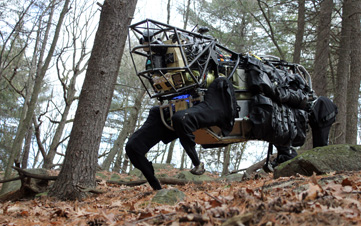
In the Military
Building on the experience of drone aircraft, the military is rapidly expanding its use of robots. Number one reason? Safety. The jobs they'll take, such as walking point on an infantry patrol, won't be missed by humans.
Closer to deployment are robots such as this one under development by Boston Dynamics and the Defense Advanced Research Projects Agency. The four-legged "mule" easily negotiates rocks and divots in the road and field. It is intended to follow a military unit of soldiers autonomously, catching up with the unit on field forays with supplies and allowing them to recharge batteries from its onboard power source. In the field, it's surprisingly quiet -- an important characteristic on a secret mission. Future versions of the pack mule will be able to interpret verbal and visual commands.
Drone aircraft will continue their expansion -- and miniaturization. Bumblebee-size fliers will scout out urban buildings and other potential danger spots. Drones will move across land and in the water — where they can be stealthily cached on the seafloor until called into action.
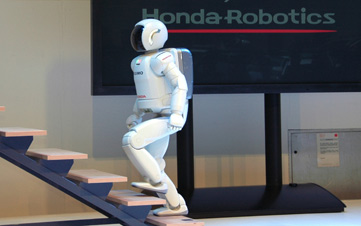
In and Around the Home
You've probably already seen Roomba, the best known of iRobot's line of autonomous house-cleaning devices. The roving vacuums have been cleaning floors and terrorizing pets for over 10 years, and iRobot has developed devices that mop floors and clean pools and gutters.
Next up: a robot that does windows. Windoro, developed in South Korea, uses a powerful magnet to keep it stuck to vertical glass. Bots will eventually even fold the family laundry. But that's just a start. They'll have a role as personal assistants, especially for the elderly living at home. Industrial giants in Japan (where the population is rapidly graying) are leading this charge. Toyota has a robot in the works that, among other tasks, can pick up and tote items around the house, remind granny to take her pills and let someone watch via Skype while she does it. Honda's ASIMO understands voice commands, climbs stairs and handles complex tasks such as picking up and opening a glass bottle and pouring the contents into a cup. Eventually, bots will lift paralytics and help them dress and eat.
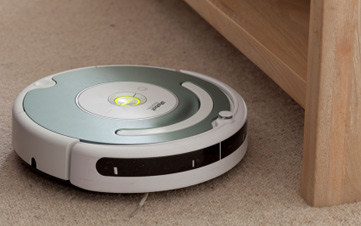
More from Kiplinger
Just Ahead: The Robotics Revolution
9 Amazing Military Technologies of the Future
What Will Be the Jobs of Tomorrow?
8 Robots That Will Change Your Life
Get Kiplinger Today newsletter — free
Profit and prosper with the best of Kiplinger's advice on investing, taxes, retirement, personal finance and much more. Delivered daily. Enter your email in the box and click Sign Me Up.
-
 33 Stocks That Could Rally 50% or More This Year
33 Stocks That Could Rally 50% or More This YearAnalysts say these S&P 500 stocks have at least 50% price upside over the next year or so.
By Dan Burrows
-
 Stock Market Today: Dow Drops 971 Points as Powell Pressure Ramps Up
Stock Market Today: Dow Drops 971 Points as Powell Pressure Ramps UpPresident Trump is increasing his attacks against Jerome Powell, insisting the Fed chair cut interest rates.
By Karee Venema
-
 Text-Generating AI Faces Major Legal Risks: Kiplinger Economic Forecasts
Text-Generating AI Faces Major Legal Risks: Kiplinger Economic ForecastsEconomic Forecasts Major legal risks to text-generating artificial intelligence: Kiplinger Economic Forecasts
By John Miley
-
 32 Ways to Make Money in 2025
32 Ways to Make Money in 2025business Check out these cool side hustles to earn bonus bucks this year.
By Bob Niedt
-
 12 IRS Audit Red Flags for the Self-Employed
12 IRS Audit Red Flags for the Self-Employedtaxes If you are self-employed, minimize the odds of an IRS audit by avoiding these audit triggers.
By Joy Taylor
-
 Business Cost Outlooks for 2022: Eight Key Sectors
Business Cost Outlooks for 2022: Eight Key SectorsEconomic Forecasts What’s in store for all sorts of business costs in 2022?
By The Kiplinger Washington Editors
-
 PPP Loan Basics for Small Business Owners
PPP Loan Basics for Small Business OwnersCoronavirus and Your Money Although uncertainty and confusion have surrounded the Paycheck Protection Program since its launch, that shouldn't stop small business owners from participating in the loan program, which was just extended to May 31.
By Rodrigo Sermeño
-
 Add a VPN to Surf the Internet Safely
Add a VPN to Surf the Internet SafelyTechnology To help you fight identity theft, consider adding a VPN.
By Emma Patch
-
 "Above-the-Line" Deductions for Your 2021 Tax Return
"Above-the-Line" Deductions for Your 2021 Tax ReturnTax Breaks If, like most people, you claim the standard deduction instead of itemized deductions on your return, there are still many other tax deductions available that could save you a lot of money.
By David Muhlbaum
-
 The Biden Tax Plan: How the Build Back Better Act Could Affect Your Tax Bill
The Biden Tax Plan: How the Build Back Better Act Could Affect Your Tax BillPolitics Depending on your income, the Build Back Better Act recently passed by the House could boost or cut your future tax bills.
By Rocky Mengle
